
Creating a Solid Financial Foundation for Adults with Disabilities
Developing effective budgeting strategies is essential for adults with disabilities to achieve financial stability and independence. Tailoring financial plans to meet individual needs, understanding available resources, and leveraging specialized tools can significantly enhance quality of life. This article explores best practices, strategies, resources, and policy considerations crucial in fostering responsible money management and long-term security.
Understanding the Basics of Budgeting for Adults with Disabilities
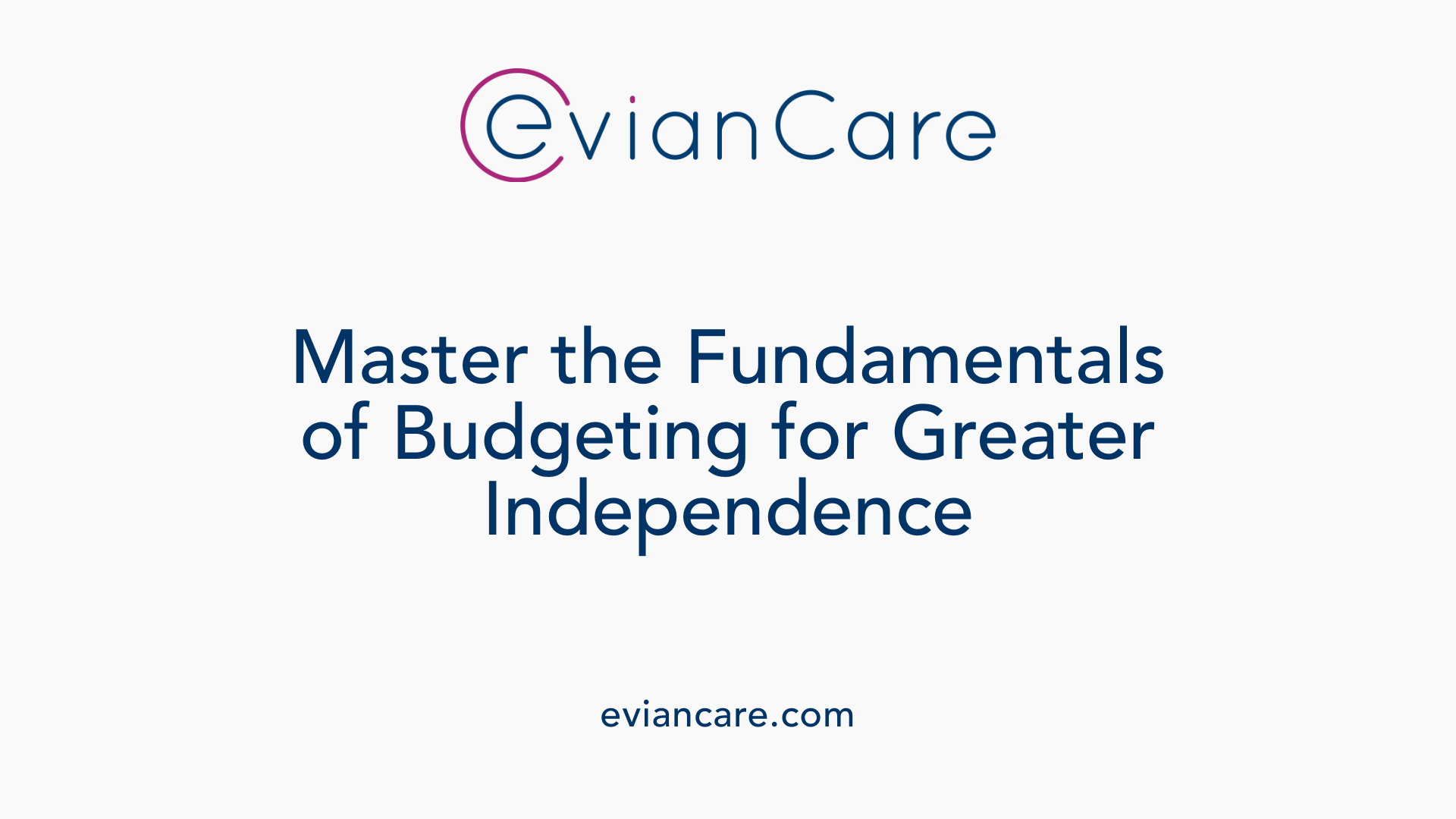 Establishing a clear budget is a fundamental step towards financial stability for adults with disabilities. A budget acts as a strategic plan that outlines expected income and necessary expenses, helping individuals control their money and plan for the future.
Establishing a clear budget is a fundamental step towards financial stability for adults with disabilities. A budget acts as a strategic plan that outlines expected income and necessary expenses, helping individuals control their money and plan for the future.
To create an effective budget, it’s important to first list all income sources, including Social Security benefits, SSDI (Social Security Disability Insurance), employment income, and other benefits like Medicaid or SNAP. Tracking this income over time provides a realistic picture of available resources.
Best practices for creating budgets suited to adults with disabilities include accounting for higher-than-average costs related to healthcare, assistive devices, home modifications, and support services. These expenses are often essential for maintaining independence and quality of life.
Utilizing available federal and state programs such as SSI, Medicaid, and SSDI can significantly offset costs. Additionally, specialized savings accounts like ABLE accounts or Supplemental Needs Trusts enable saving for future needs without risking loss of benefits.
Financial literacy plays a crucial role. Tailored educational programs, such as the 'Get Ready, Get Set, Get Going' curriculum developed by Michigan State University Extension, help build core skills like budgeting, saving, and expense management.
It's also important to review and adjust the budget regularly to adapt to life changes or shifts in benefit rules. A flexible approach ensures that the budget remains realistic and useful.
Finally, incorporating financial assessments and coaching into support services can boost confidence and decision-making skills. By understanding and managing their finances better, adults with disabilities can work towards greater independence and financial security.
This comprehensive approach to budgeting empowers individuals, helping them meet their personal goals and manage the financial complexities associated with disabilities effectively.
Budgeting Strategies and Practical Approaches
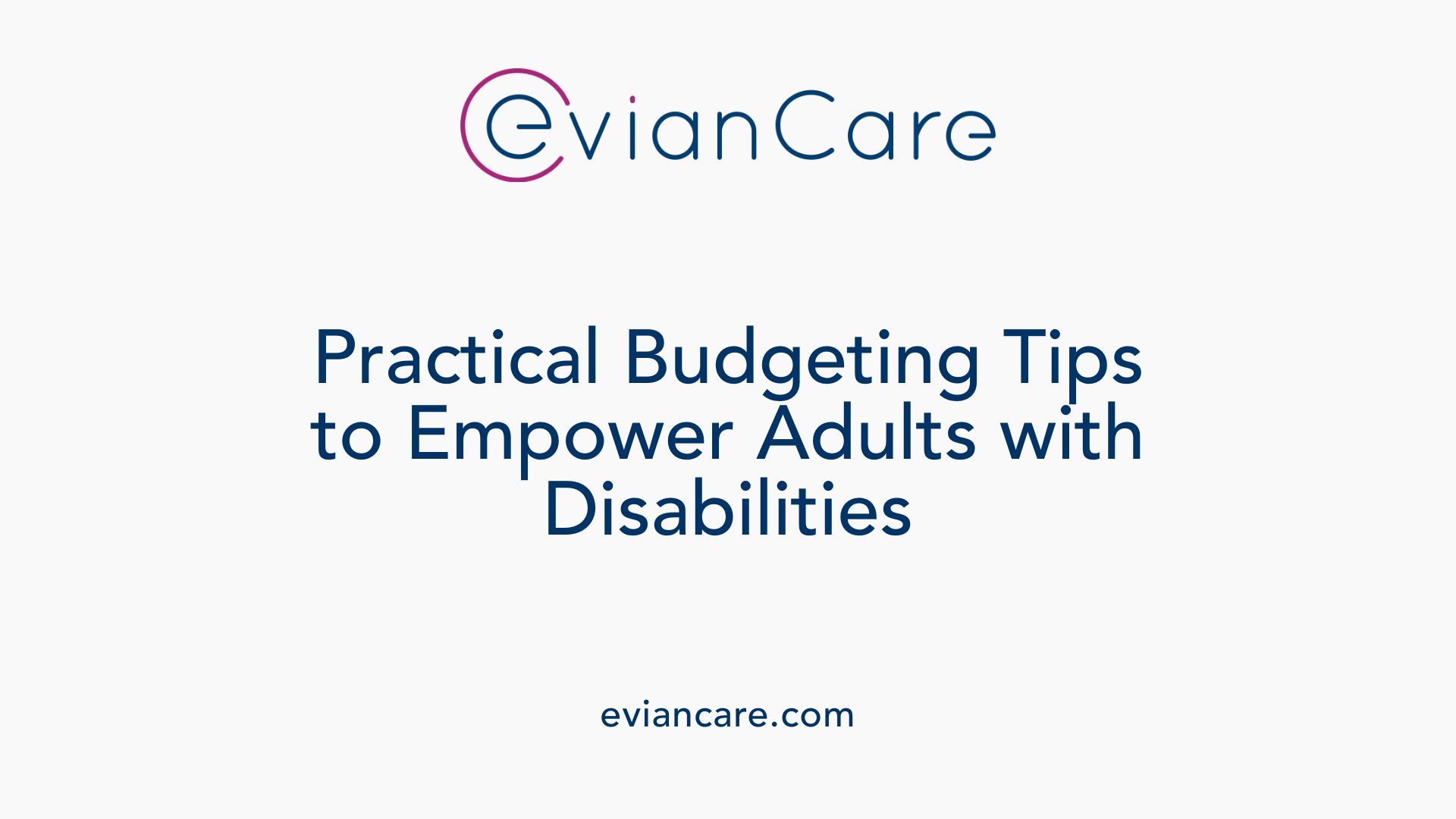
What are effective budgeting strategies for adults with disabilities?
Creating a reliable budget is essential for financial stability, especially for adults with disabilities who may face unique financial challenges. One effective approach begins with involving the individual in the planning process, listening carefully to their needs, preferences, and comfort levels to ensure the budget reflects their priorities.
Breaking down expenses into needs versus wants helps prioritize essential costs such as healthcare, medications, adaptive equipment, and housing. Needs are fixed essentials, while wants can often be scaled back if necessary.
Using visual tools like calendars, checklists, and expense logs makes creating and maintaining a budget more manageable. These tools help track income from sources like Social Security, employment, or benefits such as SSI, alongside expenses. Daily or weekly expense logs can highlight spending patterns, prevent overdrafts, and detect potential fraud.
Integrating automatic transfers, such as scheduled deposits into savings or ABLE accounts, and setting up bill reminders reduces oversight responsibilities. These strategies help ensure bills are paid timely, savings goals are met, and financial discipline is maintained.
Education about safe online banking practices, along with hands-on experience like grocery shopping or bill paying, supports building independence. Utilizing resources such as financial education programs, special savings accounts, and government supports can reinforce financial skills.
Additionally, leveraging community resources, charities, and government programs provides supplementary support for equipment, home modifications, and other needs, contributing to a comprehensive financial strategy.
By adopting these strategies—active involvement, clear visualization, automation, and education—adults with disabilities can develop effective, sustainable budgets that foster independence and financial resilience.
Resources and Educational Content Available
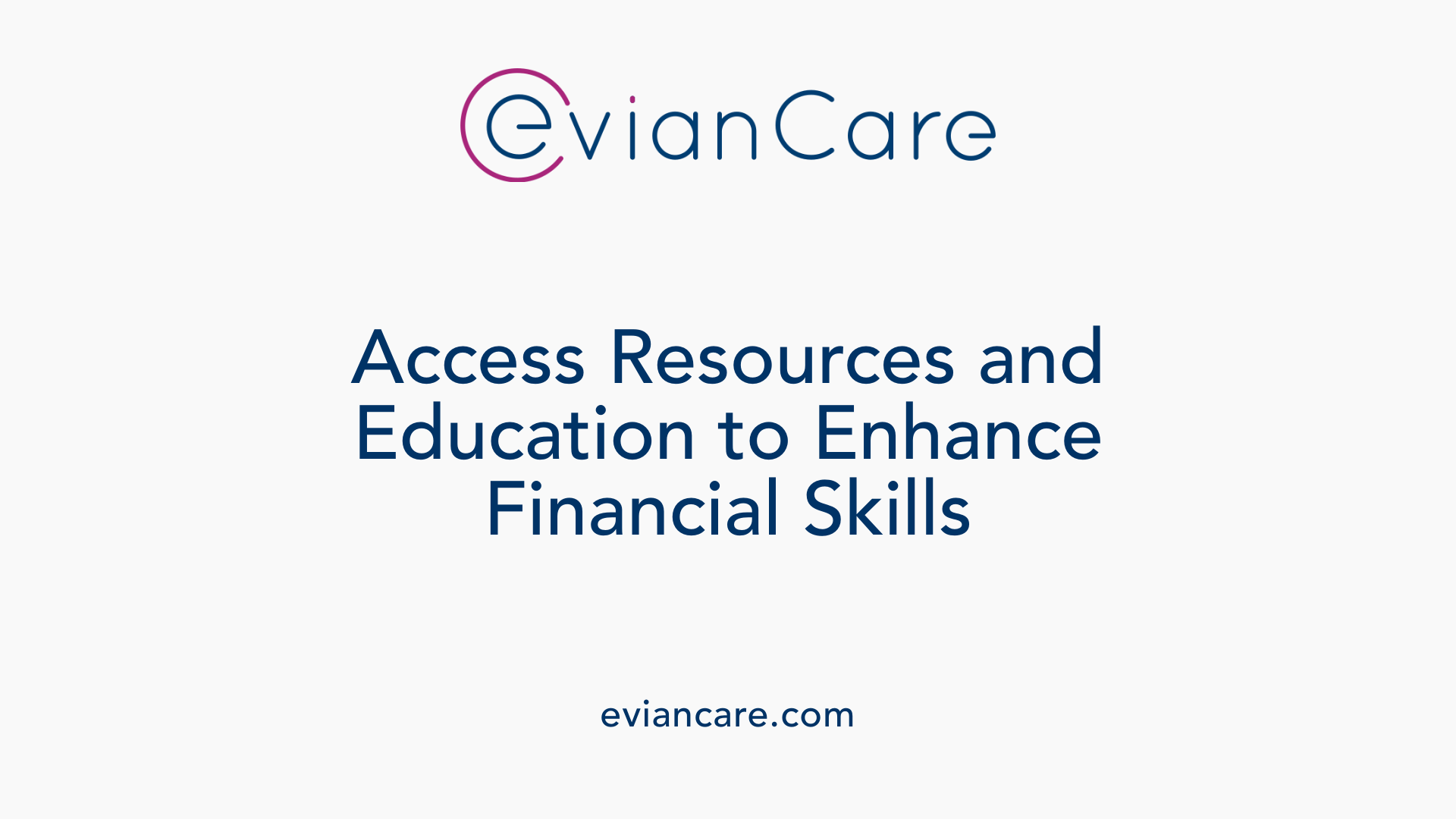 Developing effective budgeting skills for adults with disabilities requires access to specialized resources and tailored educational content. Several organizations provide comprehensive support to help individuals navigate financial management confidently.
Developing effective budgeting skills for adults with disabilities requires access to specialized resources and tailored educational content. Several organizations provide comprehensive support to help individuals navigate financial management confidently.
The National Disability Institute (NDI) is a notable leader in this area, offering customized financial literacy programs such as the Pathways to Financial Independence. These programs include structured lessons on creating budgets, managing credit, saving, and understanding assistive technology funding—aimed at building independence.
Community organizations like Paraquad and local Independent Living Centers also conduct workshops and provide guidance tailored for adults with disabilities. These often incorporate practical exercises, such as grocery shopping simulations and real-world money management scenarios, to reinforce skills.
On the online front, trusted resources like the Consumer Financial Protection Bureau (CFPB) and Finance Strategists offer downloadable guides, interactive modules, and templates specifically designed for people with learning support needs. These include worksheets for tracking expenses, planning savings, and understanding banking concepts.
Further, tools like Magnus Cards provide visual step-by-step instructions to help individuals learn daily living and financial skills, including online banking and bill payments. Accessible digital banking options, featuring high-contrast screens, braille, and audio assistance, support individuals in managing their finances safely.
In addition, engaging with financial advisors experienced in working with persons with disabilities can provide personalized advice and strategies tailored to individual circumstances. These professionals help set realistic goals, prioritize financial needs, and navigate complex benefit systems.
Overall, the combination of community programs, online tools, and personalized support creates a robust framework to foster financial literacy and independence in adults with disabilities. Access to such educational content equips them with essential skills to manage money effectively, improve financial security, and enhance overall quality of life.
Managing Benefits, Income, and Expenses Effectively
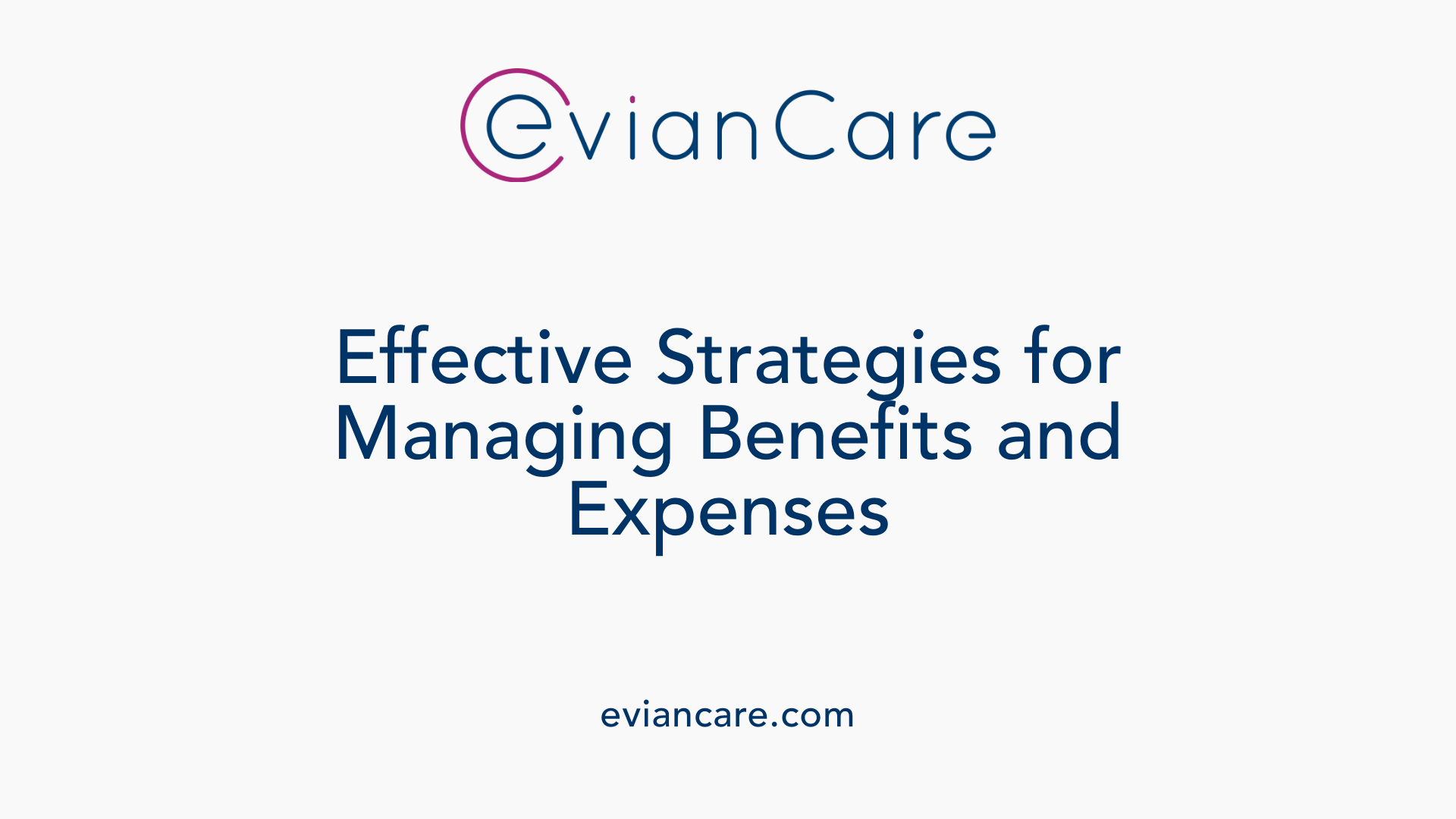
How can adults with disabilities effectively manage benefits, income, and expenses?
Managing financial resources wisely is essential for adults with disabilities to maintain independence and security. A fundamental step is developing a personalized budget that clearly distinguishes between needs and wants. By listing all income sources—such as Social Security, SSDI, employment earnings, and government assistance programs—and tracking expenses through tools like spreadsheets, budgeting apps, or simple ledgers, individuals gain a clear picture of their financial situation.
Utilizing specialized financial accounts like ABLE accounts and Special Needs Trusts helps save money without risking eligibility for crucial benefits like SSI and Medicaid. ABLE accounts, available since 2014, permit tax-free growth of savings for qualified expenses and are designed for individuals with disabilities who acquired their condition before age 26. They can hold funds for medical costs, education, housing, and more, without affecting benefits.
Understanding the difference between gross income (total before taxes) and net income (after taxes and deductions) helps in effective planning. Responsible credit management, including timely payments and monitoring credit reports, further supports financial stability. Access to assistive banking technology—such as online banking, accessible ATMs, and support services—facilitates smooth financial management.
Building an emergency savings fund, preferably covering three to six months’ worth of expenses, offers a financial cushion for unexpected costs like medical emergencies or assistive device replacements. Taking advantage of discounts, coupons, and community resources reduces overall expenses.
Engaging with financial literacy programs tailored for people with disabilities enhances knowledge about budgeting, saving, credit, and benefits. Many organizations, including disability-focused agencies and nonprofits, provide workshops and resources that support informed financial decision-making.
In summary, adults with disabilities can effectively manage their finances by creating comprehensive budgets, utilizing appropriate savings tools, understanding their income, and staying informed about financial resources and support systems. These strategies foster long-term financial health and greater independence.
Policy Considerations and Human Rights in Budgeting
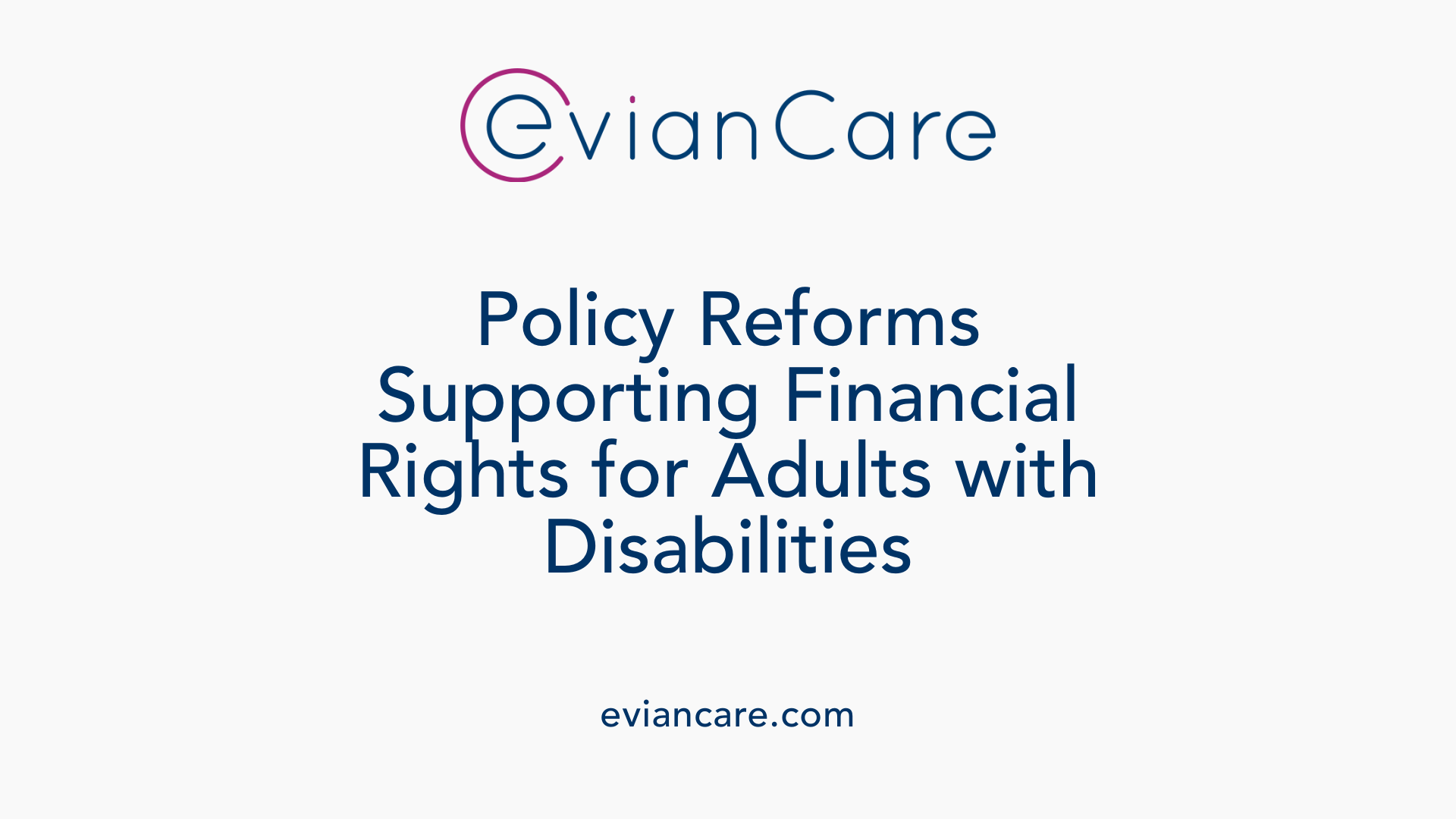
Navigating eligibility criteria for government benefits.
For adults with disabilities, understanding eligibility thresholds for programs such as Social Security Income (SSI), Medicaid, and Disability Insurance (SSDI) is crucial. These benefits often have specific income and asset limits, which can restrict access to financial resources if not carefully managed. Maintaining compliance involves tracking income, utilizing tools like ABLE accounts, and planning savings within permissible limits to avoid jeopardizing benefits.
Reforming asset limits and simplifying benefit programs.
Current policies frequently include stringent asset limits that can discourage saving and reduce financial independence among disabled adults. Reforms such as raising or removing these limits would encourage savings and investments. Simplifying applications, reducing paperwork, and streamlining benefit processes can also alleviate administrative burdens, making benefit access more straightforward and encouraging financial planning.
Aligning policies with the UN Convention on the Rights of Persons with Disabilities (CRPD).
The CRPD promotes the rights of persons with disabilities to equality, inclusion, and active participation in society. Policies that support independent living through accessible financial systems, non-discriminatory benefit structures, and tailored support services uphold these principles. Reforms should include social innovations—like accessible banking, digital financial management tools, and involvement of disabled persons’ organizations—to promote inclusion and empowerment.
Comprehensive approach to effective budgeting.
Addressing these policy considerations involves integrating financial literacy programs, promoting human rights, and adjusting regulations to enable better financial management. This holistic strategy ensures that adults with disabilities have equitable access to resources, improved economic security, and the freedom to make autonomous financial decisions.
| Policy Aspect | Current State | Recommended Changes | Human Rights Alignment |
|---|---|---|---|
| Benefit Eligibility | Asset and income limits restrict access | Raise asset limits, simplify eligibility criteria | Upholds CRPD principles of equality and non-discrimination |
| Asset Limits | Often restrictive, discouraging savings | Remove or relax limits to encourage financial independence | Promotes the right to an adequate standard of living |
| Benefit Program Design | Complex processes hinder access | Simplify procedures, enhance transparency | Supports inclusion and social participation |
| Financial Tools | Limited options within regulatory bounds | Expand access to ABLE accounts, trusts, and direct payments | Facilitates accessibility and empowerment |
| Policy Framework | Often sector-specific; lacks integration | Develop comprehensive, disability-inclusive policies | Ensures full realization of human rights for persons with disabilities |
Advancing these policy areas aligns financial inclusion with the core human rights principles outlined in the CRPD, fostering an environment where adults with disabilities can manage their finances with dignity and independence.
Building Financial Empowerment and Long-Term Security
How can adults with disabilities learn about financial empowerment and stability?
Adults with disabilities have increasing access to resources and programs that foster financial literacy and independence. One of the leading organizations offering tailored education is the National Disability Institute (NDI), which provides comprehensive curricula, toolkits, and training specifically designed for service providers working with this population.
Accessible financial education programs, such as FDIC’s Money Smart and Better Money Habits adapted for individuals with intellectual disabilities, are valuable tools. These programs include practical lessons on managing money, understanding banking, and avoiding scams, often coupled with visual aids, hands-on exercises, and simplified materials.
Financial tools like ABLE accounts are instrumental in encouraging savings without threatening eligibility for government benefits like Medicaid and SSI. They enable individuals to set aside funds for future needs while preserving their current support eligibility.
In addition to savings strategies, benefit planning and tax assistance services help individuals maximize available resources. Technologies such as assistive banking devices and online platforms further promote financial independence by offering easy, accessible ways to manage finances.
Embedding financial coaching and motivational interviewing into existing support services enhances skill development and motivation. Programs like the CFPB’s guide on recognizing and preventing financial abuse empower individuals to make informed decisions and protect themselves.
Community-based services that integrate financial education into employment and disability support programs ensure ongoing learning and reinforcement.
Involving individuals actively in financial decision-making fosters confidence and independence. Using personalized coaching, peer support, and accessible educational methods helps tailor the learning experience to each person’s needs.
By combining these resources and strategies, adults with disabilities can develop strong financial management skills, achieve savings goals, and build a long-term foundation for economic stability. Supportive environments and ongoing education are essential ingredients in empowering individuals to lead financially secure lives.
Fostering Financial Independence for All
Developing tailored budgeting strategies is essential for adults with disabilities to maintain financial stability, safeguard benefits, and promote independence. By understanding available resources, utilizing adaptive tools, and engaging in continuous education, individuals can make informed decisions that support their long-term financial well-being. Policy reforms and community support further enhance these efforts, creating an inclusive environment where every adult with disabilities has the opportunity to achieve financial empowerment and security.
References
- 8 Financial Planning Tips for People with Disabilities
- A guide to money management for people with disabilities
- New money management lessons for adults with disabilities
- Money Management for People with Disabilities
- Tips for Creating a Budget with a Disability
- Money Matters: Budgeting for Adults with LD & ADHD
- Adaptive Budgeting for Adults with Intellectual Disabilities
- Helping an Individual with Intellectual Disabilities Set Up a ...












